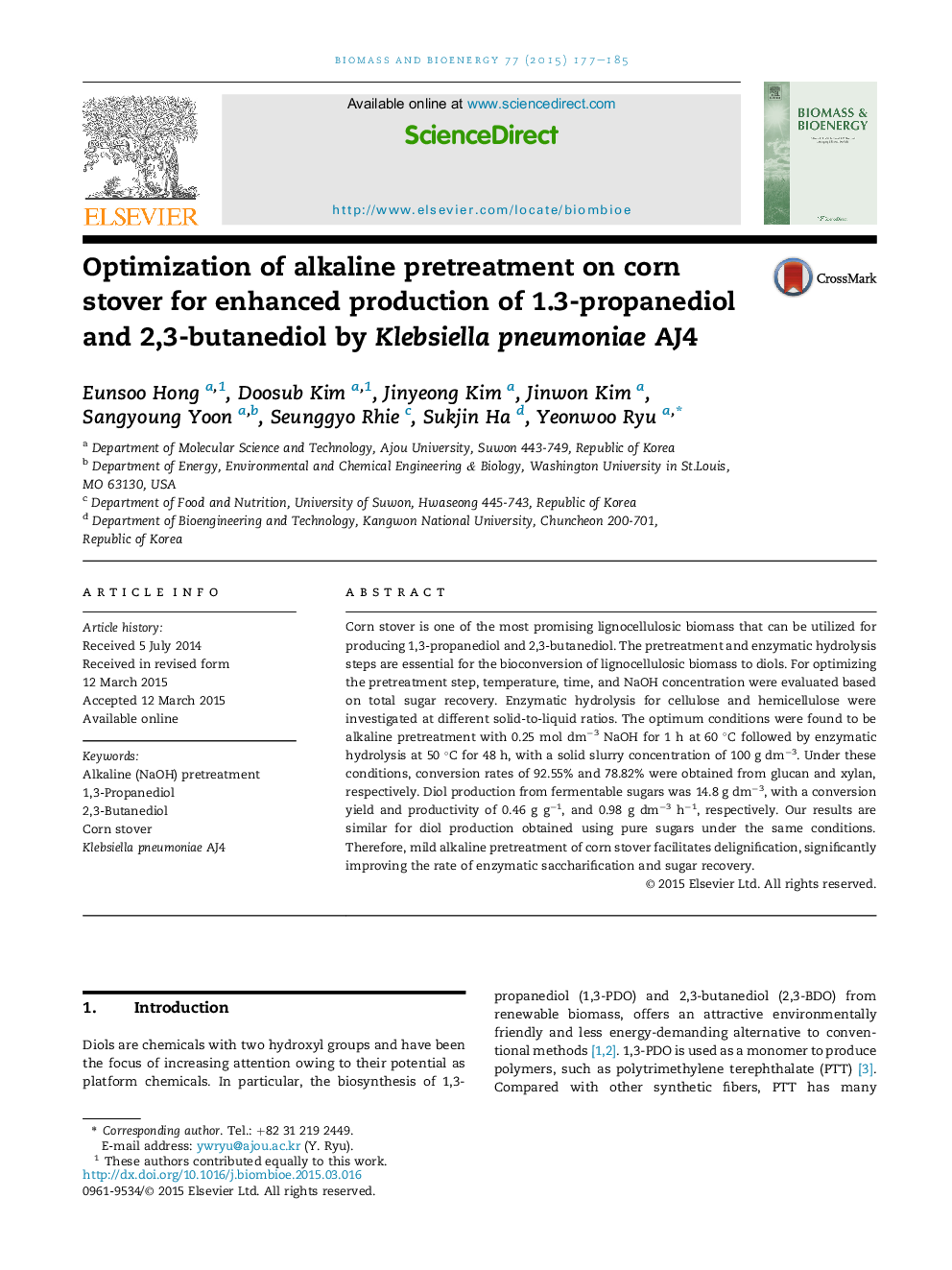| Article ID | Journal | Published Year | Pages | File Type |
|---|---|---|---|---|
| 676778 | Biomass and Bioenergy | 2015 | 9 Pages |
Abstract
Corn stover is one of the most promising lignocellulosic biomass that can be utilized for producing 1,3-propanediol and 2,3-butanediol. The pretreatment and enzymatic hydrolysis steps are essential for the bioconversion of lignocellulosic biomass to diols. For optimizing the pretreatment step, temperature, time, and NaOH concentration were evaluated based on total sugar recovery. Enzymatic hydrolysis for cellulose and hemicellulose were investigated at different solid-to-liquid ratios. The optimum conditions were found to be alkaline pretreatment with 0.25 mol dmâ3 NaOH for 1 h at 60 °C followed by enzymatic hydrolysis at 50 °C for 48 h, with a solid slurry concentration of 100 g dmâ3. Under these conditions, conversion rates of 92.55% and 78.82% were obtained from glucan and xylan, respectively. Diol production from fermentable sugars was 14.8 g dmâ3, with a conversion yield and productivity of 0.46 g gâ1, and 0.98 g dmâ3 hâ1, respectively. Our results are similar for diol production obtained using pure sugars under the same conditions. Therefore, mild alkaline pretreatment of corn stover facilitates delignification, significantly improving the rate of enzymatic saccharification and sugar recovery.
Related Topics
Physical Sciences and Engineering
Chemical Engineering
Process Chemistry and Technology
Authors
Eunsoo Hong, Doosub Kim, Jinyeong Kim, Jinwon Kim, Sangyoung Yoon, Seunggyo Rhie, Sukjin Ha, Yeonwoo Ryu,
